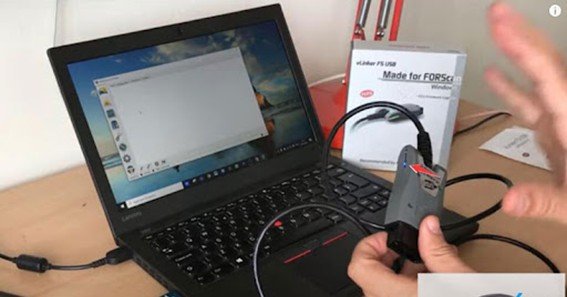The Vgate vLinker FS USB is a professional-grade OBD-II diagnostic interface designed to work seamlessly with applications like FORScan, providing users with comprehensive vehicle diagnostics and programming capabilities. To ensure optimal performance, it’s essential to install the correct USB drivers and configure the device properly.
Installing the Vgate vLinker FS USB Drivers
Step 1: Download the FTDI Virtual COM Port (VCP) Drivers
The vLinker FS USB utilizes FTDI chips for USB-to-serial communication. To ensure proper functionality, download the latest VCP drivers from the FTDI website. Select the appropriate driver version compatible with your operating system.
Step 2: Install the Drivers
-
Locate the downloaded driver file and extract its contents if necessary.
-
Run the installer and follow the on-screen prompts to complete the installation.
Step 3: Connect the vLinker FS USB to Your Computer
After installing the drivers, plug the vLinker FS USB adapter into an available USB port on your computer. The operating system should recognize the device and assign it a COM port.
Configuring FORScan for vLinker FS USB
Step 1: Launch FORScan
Open the FORScan application on your computer.
Step 2: Access the Connection Settings
-
Navigate to the ‘Settings’ tab within FORScan.
-
Select the ‘Connection’ section.
Step 3: Configure the Connection Parameters
-
Set the ‘Connection Type’ to ‘FTDI’.
-
Adjust the ‘Baud Rate’ to ‘115200’.
-
Enable the ‘Auto-increase’ option to allow FORScan to optimize communication speed.
Step 4: Save Settings and Connect
After configuring the settings, return to the main FORScan interface and initiate a connection to your vehicle. FORScan should now communicate effectively with the vLinker FS USB adapter.
Firmware Updates and Compatibility Considerations
Firmware Updates
To access the latest features and ensure compatibility, regularly update the vLinker FS USB firmware. Firmware updates can be downloaded from the Vgate official website. Follow the provided instructions to apply the updates safely.
USB Port Compatibility
Some users have reported compatibility issues when using the vLinker FS USB with USB 3.0 ports. If you encounter connectivity problems, try connecting the adapter to a USB 2.0 port or use a USB hub that supports USB 2.0.
Operating System Support
The vLinker FS USB is compatible with various Windows operating systems, including Windows 7, 8, 8.1, 10, and 11. Ensure that your operating system is up-to-date to prevent potential driver conflicts.
FAQ
1. How do I know if the vLinker FS USB drivers are installed correctly?
After connecting the adapter, check the Device Manager on your computer. If the drivers are installed correctly, the device should appear under ‘Ports (COM & LPT)’ without any warning symbols.
2. Can I use the vLinker FS USB with diagnostic software other than FORScan?
Yes, the vLinker FS USB is compatible with various OBD-II diagnostic applications. However, always verify compatibility with the specific software before use.
3. What should I do if FORScan cannot detect the vLinker FS USB adapter?
Ensure that the drivers are installed correctly, the adapter is securely connected, and the correct COM port is selected in FORScan’s settings. Additionally, try using a USB 2.0 port if you’re experiencing connectivity issues with a USB 3.0 port.
4. Is it necessary to update the vLinker FS USB firmware?
While not always necessary, updating the firmware can provide enhanced features and improved compatibility with diagnostic software.
5. Where can I find support if I encounter issues with the vLinker FS USB?
For assistance, visit the Vgate support page or consult user forums and communities related to your specific diagnostic software.
Proper installation and configuration of the Vgate vLinker FS USB drivers are crucial for effective vehicle diagnostics. By following the steps outlined above, you can ensure a seamless setup and unlock the full potential of your diagnostic interface.
Read on to know more about nikon-fg-review










